Southern Spain often steals the spotlight among expat communities, conjuring images of flamenco dancers, guitar serenades, and coastal feasts in white-washed villages. With its sunny, almost tropical climate, it’s easy to see why it’s considered a paradise.
Yet, quietly tucked away in the northern regions of Spain lies an undiscovered gem for expatriation—a land rich in history, culture, and breathtaking landscapes. Here, craggy cliffs give way to charming seaside hamlets, and Basque cider houses resonate with cheerful melodies rooted in folk traditions. Mountain ranges beckon adventurers, coastal waters sparkle under the sun, and authentic, uncrowded Spain awaits exploration.
Whether you’re seeking top-tier education, world-class cuisine, ski resorts, marinas for your sailboat, or serene hiking trails, Northern Spain has it all. A couple can comfortably live here on a budget of $2,000 to $3,000 a month.
For US and Canadian expats in particular, Northern Spain offers a refreshing cultural shift. In this guide, we’ll explore some of the best places to call home in this captivating region.
Get Your Free Spain Report Today!
Get Your Free Spain Report Today!
Learn more about the lower cost of living in Spain and other countries in our free daily postcard e-letter. Simply enter your email address below and we'll also send you a FREE REPORT — Live the Good Life in Sunny, Affordable Spain.

By submitting your email address, you will receive a free subscription to IL Postcards, Overseas Dream Home, The Untourist Daily and special offers from International Living and our affiliates. You can unsubscribe at any time, and we encourage you to read more about our Privacy Policy.
San Sebastián
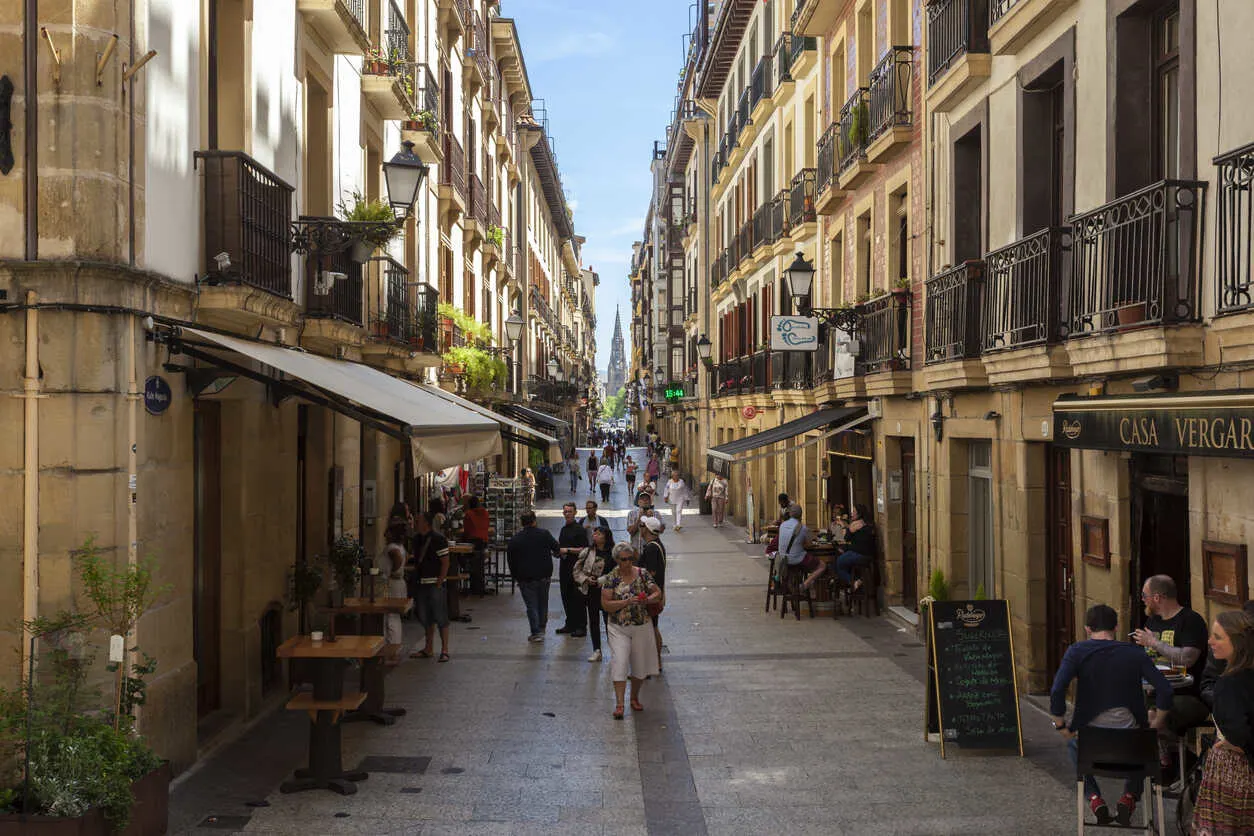
Known as a culinary paradise with beautiful beaches and a vibrant cultural scene, Spain’s shining jewel of the North invites the young, glamorous, and affluent to enjoy one of the most famous old towns in Spain. In Parte Vieja and along the waterfront promenade of La Concha, the beachy beating heart of the town, you’ll find travelers and snowbirds looking to enjoy the sun and fun. The ancient old town streets, La Bretxa market, and the funicular to Monte Igueldo are other popular attractions.
Whether by day or night, the tapas in San Sebastián are second to none, famed for their ‘pintxos’ (peen-chose) and montaditos—small skewers of pickled items, meats, seafood, or toast points topped with spreads, cured meats, or cheeses. Try their popular ‘kalimotxo’ (kah-lee-moe-cho), a spin on Sangria made with red wine and Coca-Cola.
San Sebastián is also a hub for Basque culture, including their cider houses, folk roots, and unique language. The Basque people are wonderfully community-driven, placing family and food above all else.
Don’t miss opportunities for unique day trips to nearby coastal Hondarribia or stay local for annual events and film festivals. France is an easy and short drive away, and the rest of Europe is accessible by boat through nearby Bilbao or via buses and trains.
A seasonal playground for celebrities and beach-goers, San Sebastián, offers a high quality of life with excellent healthcare and education systems. While the cost of living is generally higher than in other Northern cities, the romanticism of this magnificent city justifies the expense.
Bilbao
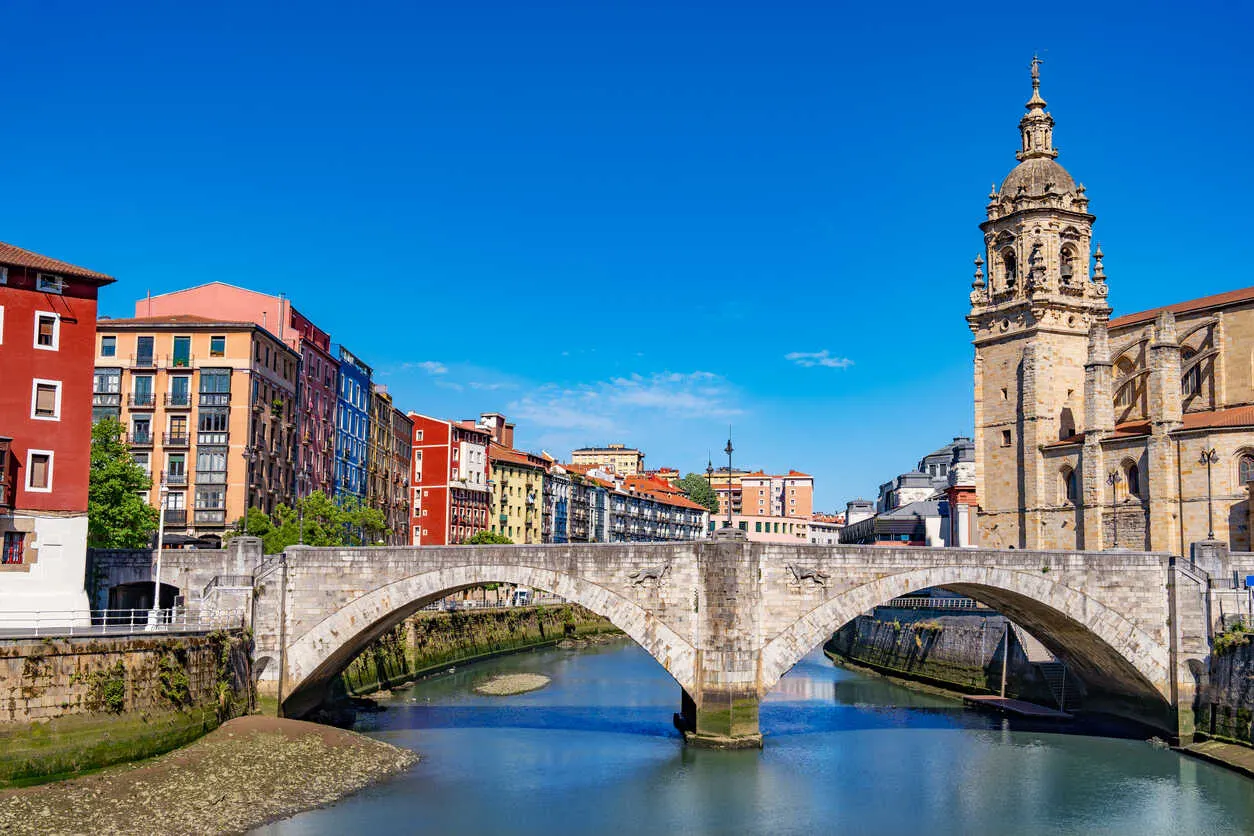
For a taste of modern Spain, Bilbao is just the ticket. Particularly inviting for families looking to settle down, Bilbao provides parks, green spaces, and excellent options for studying abroad. Children will grow and learn to speak both Basque and Castilian Spanish, with public education being free.
Food plays a central role in Bilbao’s everyday life, with Basque cuisine taking center stage. Modern art and culture round out the city’s offerings, with highlights like the Guggenheim Museum.
Bilbao offers expats moderately priced housing options compared to its Basque neighbor, San Sebastián. Families are especially drawn to Bilbao due to its reputation for safety and its youthful vibrancy.
Bilbao’s excellent public transportation and infrastructure make it easy to travel, including to England and the UK, where the city port offers regular overnight ferry services to Portsmouth and Plymouth. On the downside, be prepared for wet weather in Bilbao, which is common in this northern city.
Just outside Bilbao, along the shoreline, you’ll find jaw-dropping natural landscapes, including the Game of Thrones film location at San Juan de Gaztelugatxe. Hikers and outdoor enthusiasts will love the opportunities to explore nature, where surfing is another popular pastime.
Overall, Bilbao is ideal for younger families looking to grow in Spain. It offers modern conveniences, a vibrant art scene, cutting-edge cuisine, and a familial atmosphere.
Santander
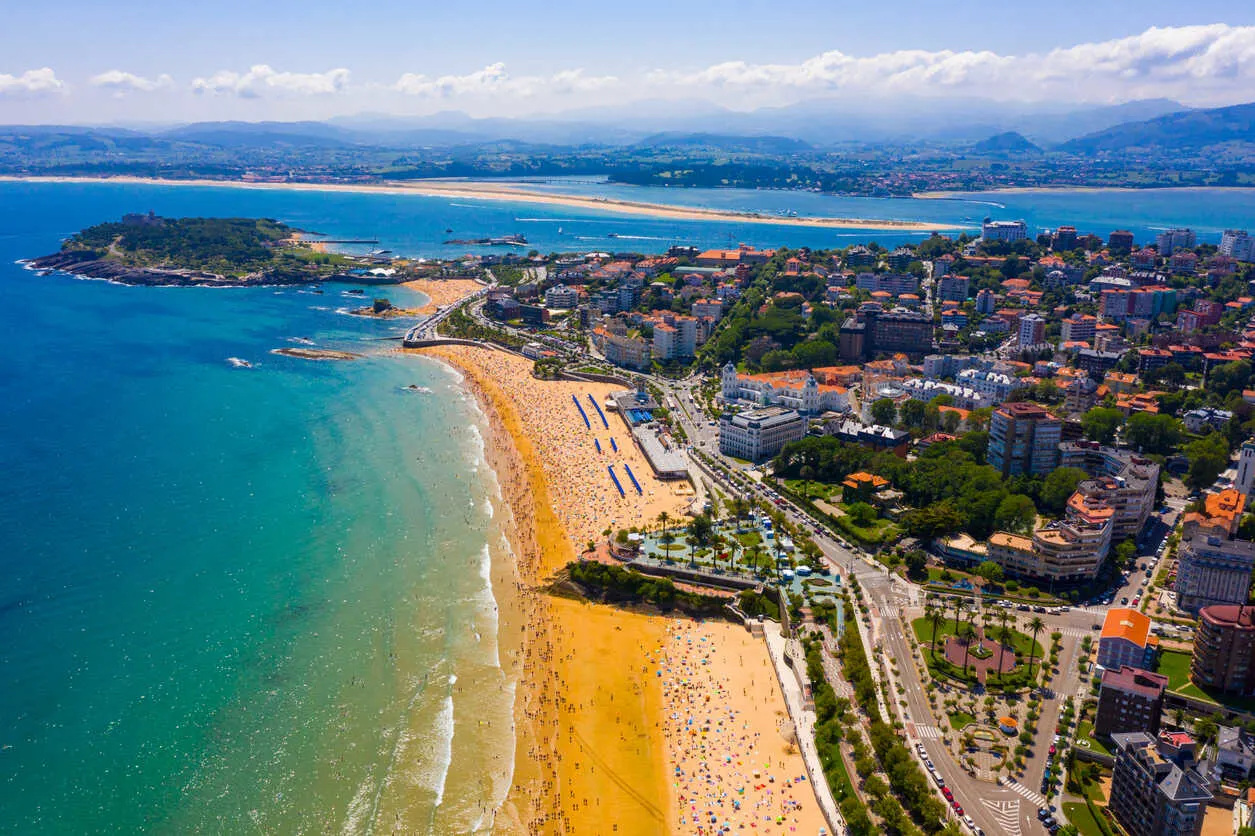
Another major port for travelers to and from England and the UK, Santander offers regular connections by overnight ferry. A sizable city of nearly 200,000 residents, Santander provides comfortable living and access to Spain’s richest regions in the north. Moderately priced, Santander is home to Banco Santander, one of Spain’s largest banking chains, offering a stable and affordable economy to its residents.
With no shortage of unique maritime charms, there are numerous beaches and marinas to call your own. Old town strolls include visits to cathedrals, palaces, and gardens, offering plenty of chances to discover favorite seafood restaurants. Don’t overlook the gorgeous seaside Palacio Real de La Magdalena, a castle-like palace, or Pereda Gardens, a lovely green space to enjoy nature.
Santander is a wonderful place to settle down with children. The city is safe, and beach days dominate the summer. Pedestrian lanes make shopping for daily groceries a fun outing, and the mild climate is never too hot or too cold. Santander often ranks as one of the best places to retire in Northern Spain, thanks to its high quality of life.
Get Your Free Spain Report Today!
Get Your Free Spain Report Today!
Learn more about the lower cost of living in Spain and other countries in our free daily postcard e-letter. Simply enter your email address below and we'll also send you a FREE REPORT — Live the Good Life in Sunny, Affordable Spain.

By submitting your email address, you will receive a free subscription to IL Postcards, Overseas Dream Home, The Untourist Daily and special offers from International Living and our affiliates. You can unsubscribe at any time, and we encourage you to read more about our Privacy Policy.
Soria
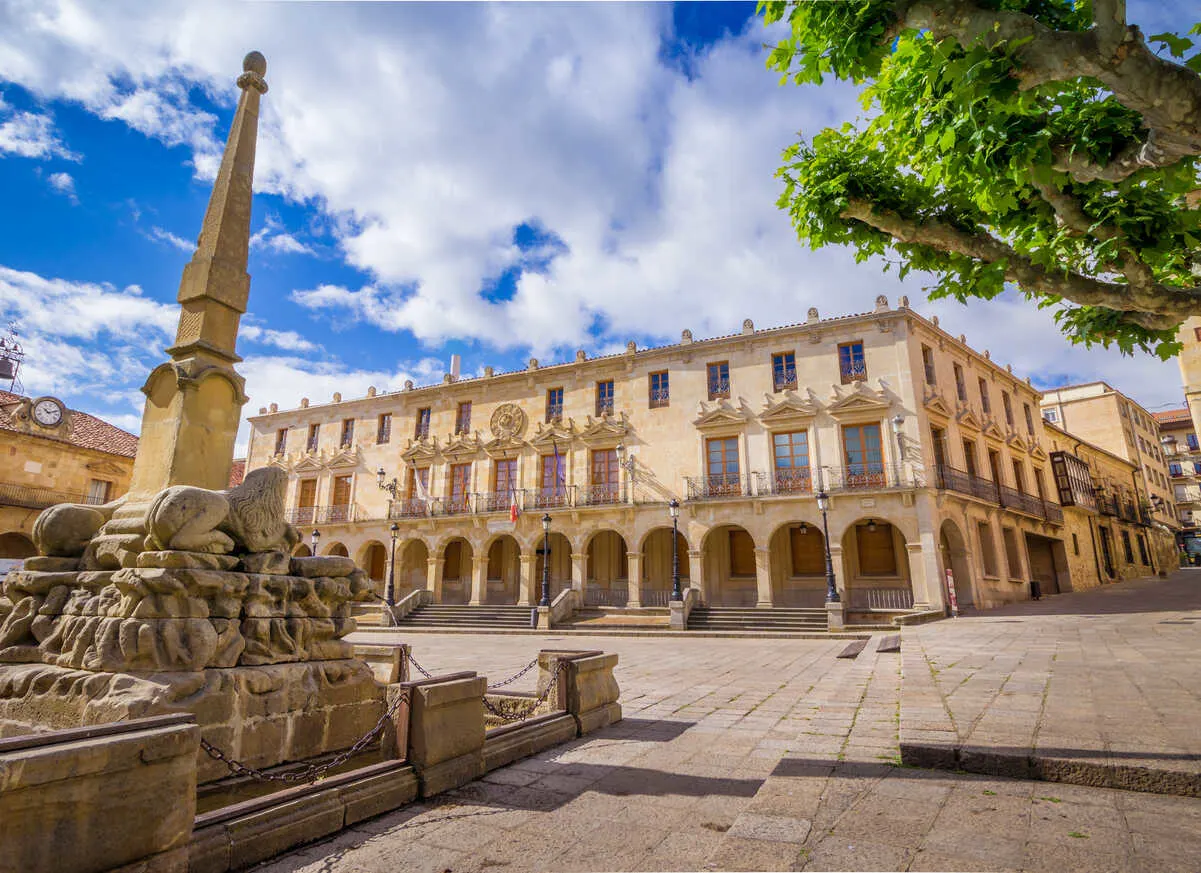
Steeped in Roman history, Soria is a little-known city (even to many Spaniards!). It features architecturally unique villas, landscapes, and hamlets to explore. The abundance of 12th-century Romanesque churches complements the palaces, monastery ruins, and shrines that draw tourists on their way to larger Northern cities.
Soria’s smaller population of roughly 40,000 people lives along the Douro River, where nature enthusiasts can enjoy enchanting walks to Ermita de San Saturio, a cliffside cave, and monastery, or the ruins of San Juan de Duero along the riverbank. Known for its clean air and diverse landscapes—from forests to river valleys—Soria is a haven for hikers and outdoor lovers.
Sorians live a modest lifestyle focused on food agriculture, harvesting staples of the Mediterranean diet. Locally sourced dining and food costs are very reasonable, and you may even find yourself foraging for mushrooms or hunting wild boar and quail, adding to the farm-to-table lifestyle that Sorians enjoy.
Moving to Soria will undoubtedly be an amazing venture, but be prepared for little to no spoken English and chilly winters. Soria is also a fairly rural destination as soon as you exit the city proper, consisting of tiny villages populated predominantly by those over the age of 65. As a result, Soria has become well-known as a land of retirement, where tourism and farming are the main draws. Even so, the tourism that comes to Soria mainly consists of Spaniards due to its off-the-beaten-path location in central Northern Spain.
If a touch of solitude paired with absolute immersion into Spanish culture calls your name, Soria may be a great choice for retirement. With little to no influence from outside cultures, authentic Spain is easy to find in Soria.
Logroño
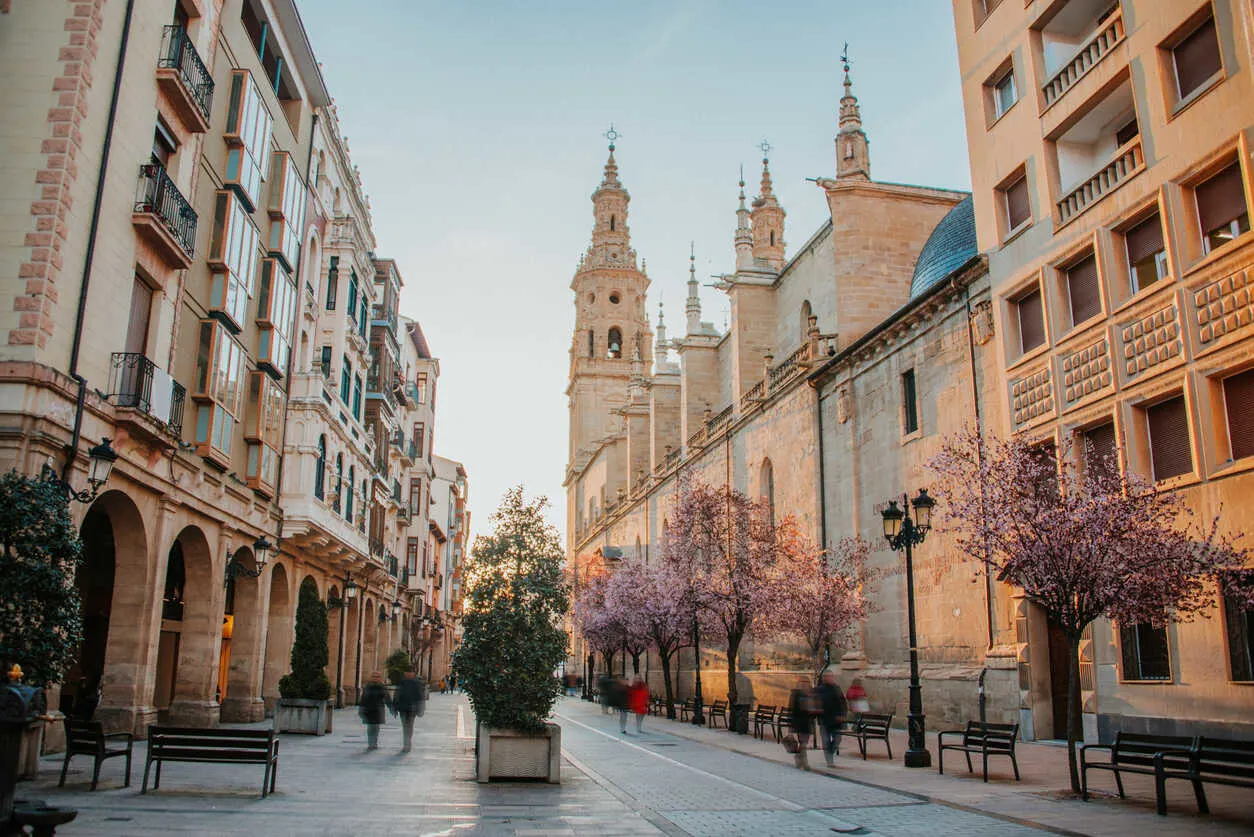
Oenophiles and lovers of viticulture will admire this home within the heart of the famous Rioja wine country. Essentially the Napa of Spain’s central wine regions, its ancient streets boast lively restaurants, tapas bars, and bodegas for wine tasting.
With over 150,000 inhabitants, Logroño is large enough to spread out but retains a small-town feel in its central old town streets. The happening lanes of Calle del Laurel invite residents out for a stroll, some tapas, and people-watching, while weekends can easily be spent visiting the region's bodegas and vineyards.
High-end hotel chains cater to wine tourists, bringing in a good amount of money from the vineyards. Expect higher tourist prices in trendy areas of town, but enjoy the luxury of vineyard vistas as far as the eye can see outside of town.
The cost of living is very affordable, especially for food, wine, and housing. Situated in a high-traffic area of Northern Spain’s byways, it’s easy to travel to neighboring regions for weekend getaways and trips to the coast.
The University of La Rioja is the main institution for higher education in Logroño, attracting some students to the area, but the city’s population is well-rounded in age.
Tudela
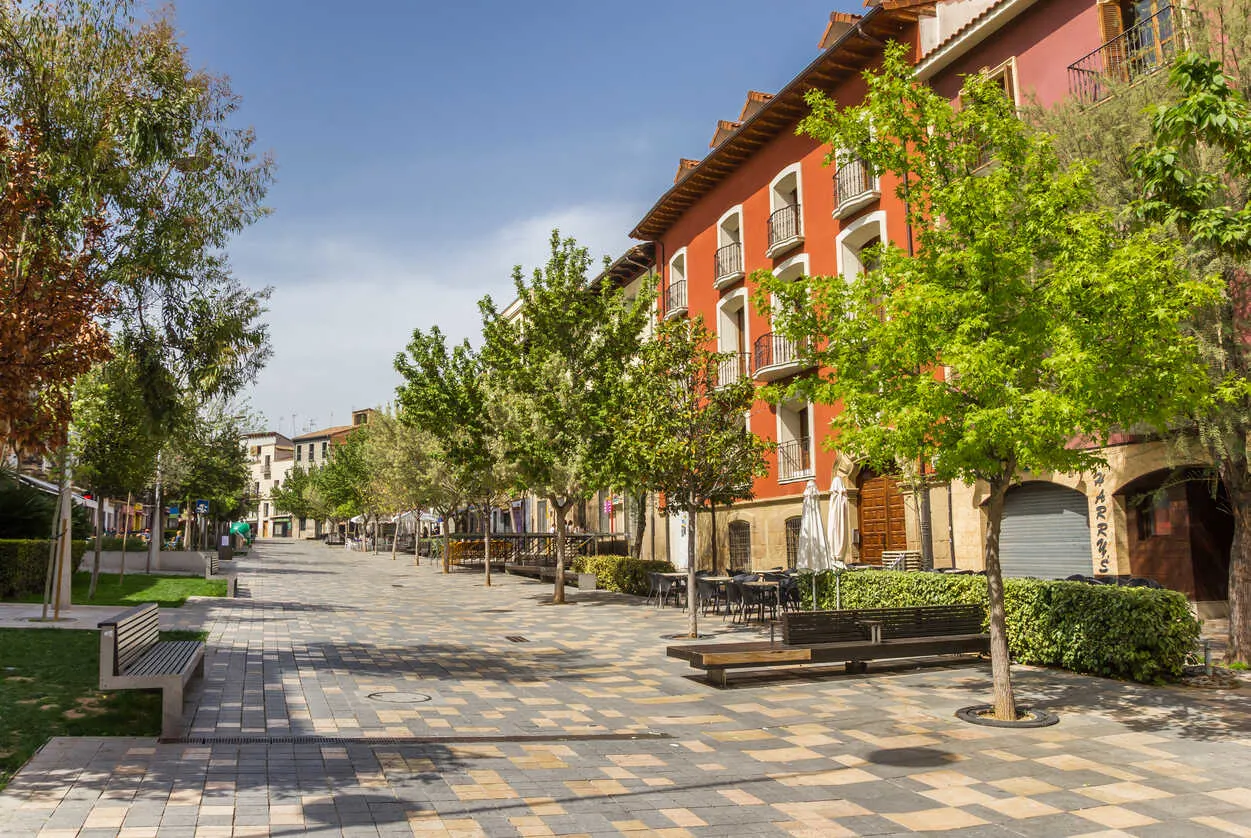
Located just north of the large Aragonese capital city of Zaragoza, Tudela is rich in history, stemming from over 400 years of Muslim rule. Offering classic architecture largely influenced by the Moors and Muslims in the ‘Mudejar’ style, the city seamlessly blends the modern and the historic.
Charming and well-connected by rail, Tudela offers an abundance of natural attractions and day trips nearby. Hop on the rail line or take a car to visit any number of vineyards in the neighboring Navarre wine region or go fishing along the River Ebro.
Drive under an hour to reach the fairytale castle of Olite and its wine-influenced economy, or explore the stunning natural landscapes at Bardenas Reales.
Experience authentic Spain in the heart of the city at Plaza de los Fueros, and say “salud” (cheers) to a relaxing day in Tudela’s affordable and tranquil home.
Steeped in a blended history of tradition, Tudela’s Jewish Quarter is one of its most intriguing neighborhoods to explore. With the progress of time, the convenience of the train line, and the traditions of an intriguing past, Tudela has much to offer residents.
A Coruña

A thriving city, A Coruña balances bustling modernity with laid-back harbor life. Synonymous with seafood and coastal living, the Galician city also enjoys moderate temperatures year-round.
Home to science and art museums, A Coruña is far from an average Spanish village; it’s a progressive city. A Coruña’s heartbeat is its financial and industrial focus, which brings higher prices but also economic stability.
The city receives over 60 cruise ships a year, boosting tourism to its ports and proving it to be a populous and modern harbor for activity.
Visit the Tower of Hercules, a unique Roman lighthouse from 2 AD, or journey into the town center to see the City Hall and Maria Pita Square.
Finish a typical day strolling one of the largest promenades in Europe, the nine km-long Paseo Maritimo. Boaters may be tempted to get a spot in the marina and set up shop in this lively city at the far west of Northern Spain’s shores.
Llanes
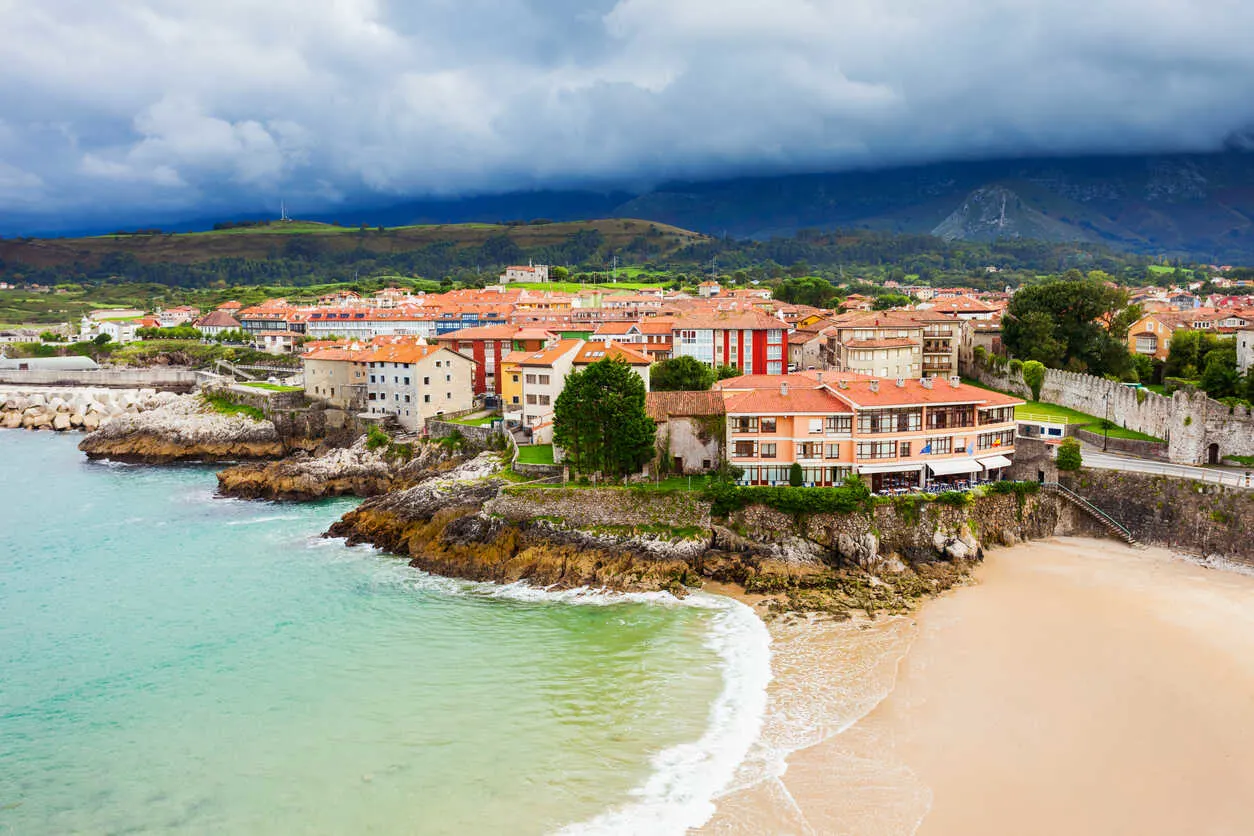
A charming town in Asturias, Llanes offers picturesque harbors, dramatic cliffside vistas, and a traditional small-town feel. With that small-town feel comes a small-town economy, meaning a moderate cost of living. Regular beach and leisure tourism ebbs and flows, bringing seasonal peaks in crowds to the petite village.
Known for its tremendous food and folk culture, Asturias is a lovely place to explore community, belonging, and gastronomy.
Besides spending sunny days at the many beautiful beaches on the Asturian coast, nature lovers will enjoy the nearby mountains, caves, and rock formations.
Visit the casino, palaces, and other notable landmarks, or while away leisure time in one of the many picturesque squares.
Get Your Free Spain Report Today!
Get Your Free Spain Report Today!
Learn more about the lower cost of living in Spain and other countries in our free daily postcard e-letter. Simply enter your email address below and we'll also send you a FREE REPORT — Live the Good Life in Sunny, Affordable Spain.

By submitting your email address, you will receive a free subscription to IL Postcards, Overseas Dream Home, The Untourist Daily and special offers from International Living and our affiliates. You can unsubscribe at any time, and we encourage you to read more about our Privacy Policy.
Vitoria-Gasteiz

When Spaniards are asked where the best places to live in Spain are, Vitoria repeatedly shows up in the top rankings. Centrally located in the heart of the Basque Country, Vitoria is considered one of the finest Northern Spanish cities to live in, especially for retirees.
Known for its industrious efforts in aeronautics, healthcare, viticulture, and the automotive industry, Vitoria boasts a high-producing economy. While the cost of living is higher, the salaries for residents are also higher, making it an attractive place to relocate for the working crowd.
Vitoria plays host to numerous local events and annual international music festivals, offering a gateway to the beloved Basque region known for its gastronomy and community.
Set inland, away from the coast, Vitoria is best accessed by private vehicle, offering ample opportunities for day trips. In the city, explore churches, cathedrals, basilicas, and sanctuaries, or visit the Old Quarter, museums, and many green spaces.
If you want a perfect mix of sunshine, leisure activities, business opportunities, and even nightlife, Vitoria has it all. A dream retirement spot for expats, young and old, Vitoria offers nature, minimal tourism, and everything else you might want in a Northern Spanish home.
San Vicente de la Barquera
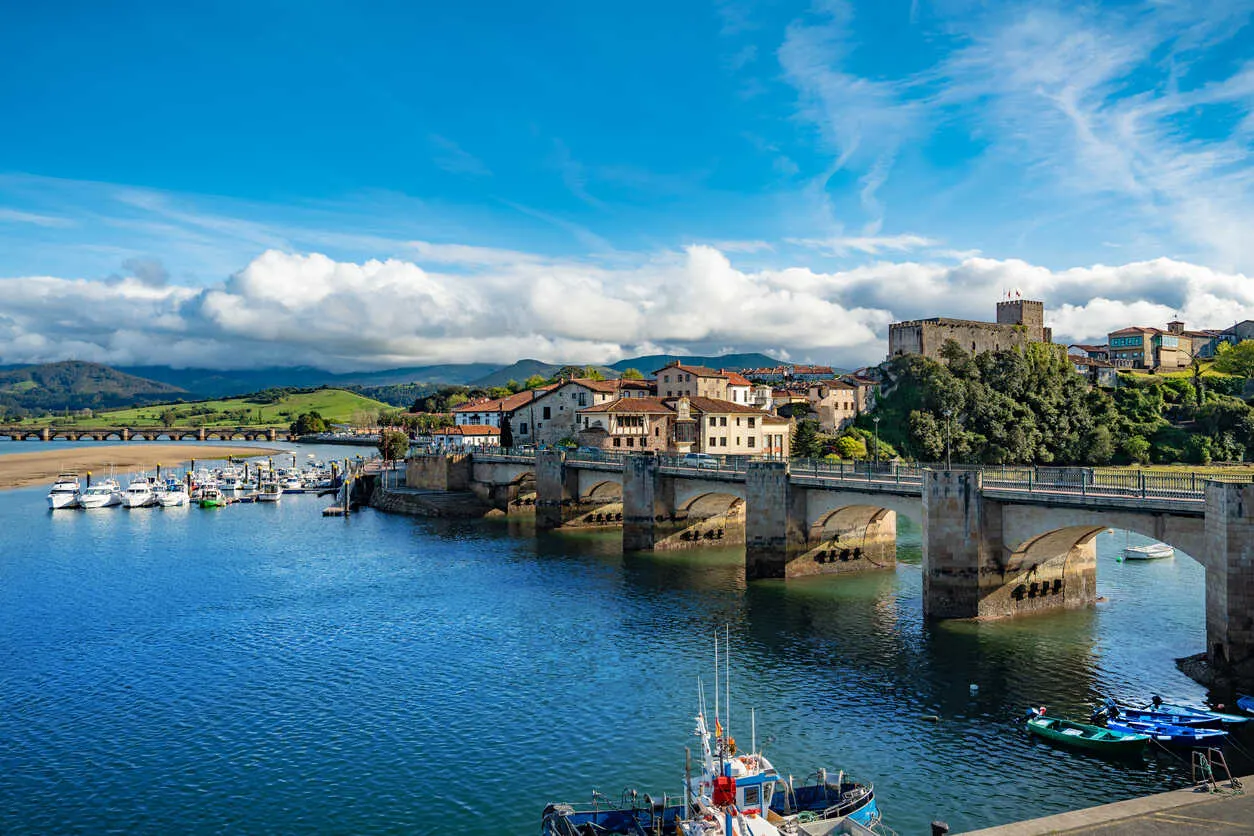
When surveyed about where they would love to retire in Northern Spain, Spaniards emphatically included this tiny seaside village on the list. With a town population of under 5,000 people, this peaceful community has much to offer, starting with its welcoming seafront façade. The Picos de Europa mountain range provides a craggy, awe-inspiring backdrop to the town, with its snowy peaks and stunning might. Living in a postcard setting isn’t all, though.
The beaches and old town shimmer in the shadow of an old fisherman’s village, now a retirement paradise. Wander, dine, and stroll in a tranquil village, visit historic buildings and churches, and explore the region easily by car on day trips.
Witness pilgrims traveling along the famous Camino routes in Spain, which pass through this town, and set up shop in the main square to sample part of the enlightened path yourself. Through the tranquility of the small town, immerse yourself in nature and peace.
Due to its size, expect moderately higher costs in this small seaside village, but gain the tranquility of living in a storybook setting.
Jaca
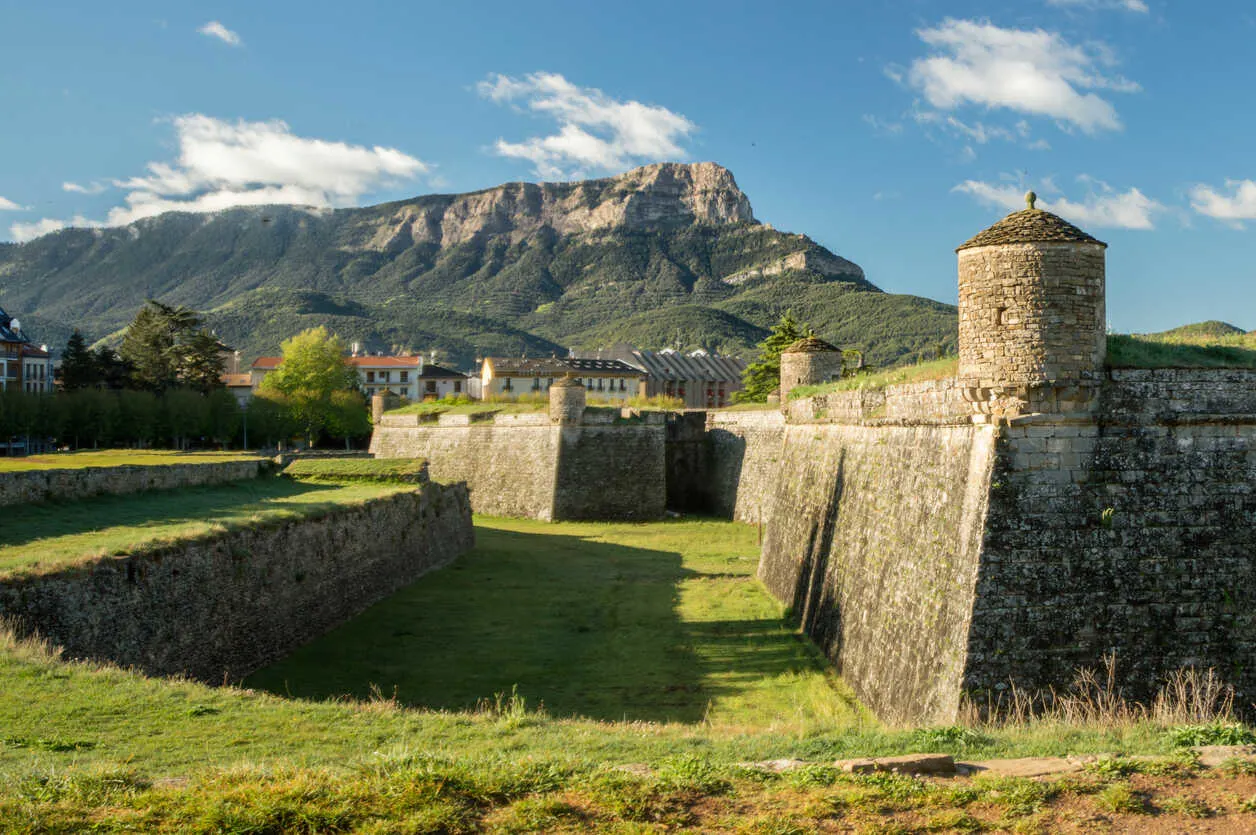
With a reasonably sized population of over 12,000 residents, Jaca is neither a small village nor a large city, but it has one thing that no other city on this list has—ski resorts. Bordering the Pyrenees mountains and France, skiers will enjoy Jaca’s nearby Astun Ski Resort, while city dwellers may simply enjoy the Germanic lodges and wintry scenes.
The ancient fort city boasts medieval walls and towers worth exploring, and Jaca is a popular stop along the infamous Camino de Santiago pilgrimage route. Backpackers, travelers, and people from all walks of life venture through year-round for this purpose.
Winter is a popular time, bringing seasonal increases in visitors when winter sports enthusiasts come through. Considering its remote location in the mountains, the cost of living in Jaca is significantly higher than in the lowlands of Northern Spain, and amenities like shopping plazas are harder to come by without traveling to larger, less mountainous areas. If mountains and seclusion are more your speed, Jaca may be the place for you.
Final Thoughts
As you explore the many possibilities Northern Spain has to offer, each city and town reveals its unique charm and appeal. From the world-renowned cuisine of San Sebastián to the serene beauty of San Vicente de la Barquera, this region provides a rich tapestry of experiences for those looking to start a new chapter abroad. Whether your priority is cultural immersion, natural beauty, or a balanced lifestyle, Northern Spain has something for everyone. The decision of where to settle is just the beginning of what promises to be an exciting and fulfilling journey in one of Spain's most captivating regions.
Get Your Free Spain Report Today!
Get Your Free Spain Report Today!
Learn more about the lower cost of living in Spain and other countries in our free daily postcard e-letter. Simply enter your email address below and we'll also send you a FREE REPORT — Live the Good Life in Sunny, Affordable Spain.

By submitting your email address, you will receive a free subscription to IL Postcards, Overseas Dream Home, The Untourist Daily and special offers from International Living and our affiliates. You can unsubscribe at any time, and we encourage you to read more about our Privacy Policy.
